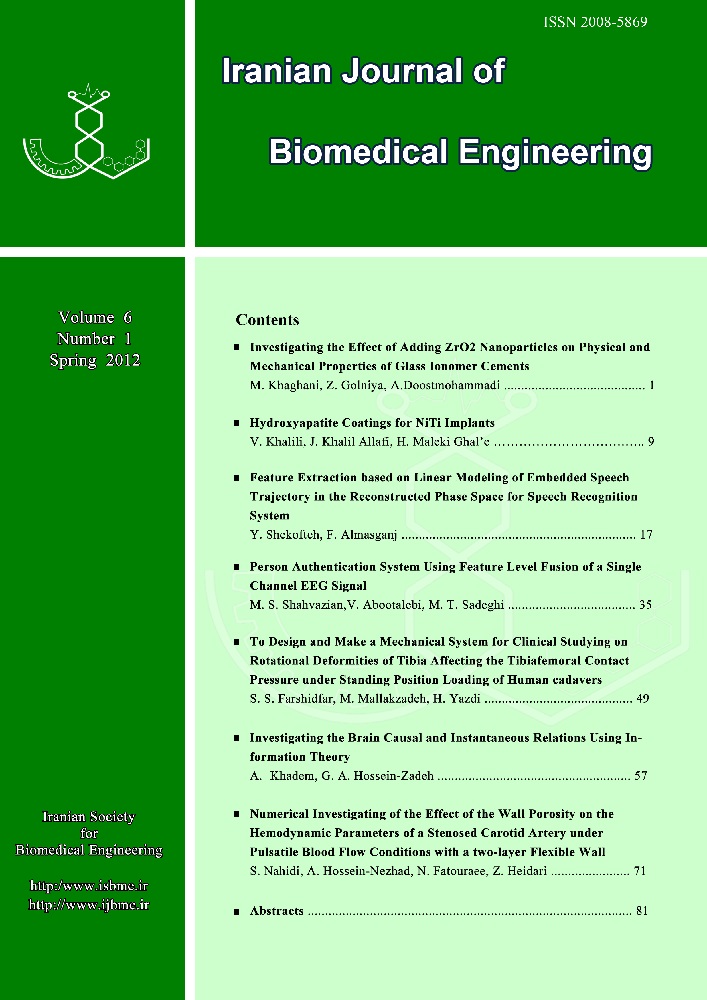Document Type : Full Research Paper
Authors
1 M.Sc. Biomechanics Group, School of Mechanical Engineering, Iran University of Science and Technology
2 Assistant Professor, Biomechanics Group, School of Mechanical Engineering, Iran University of Science and Technology
3 Assistant Professor, Orthopedics Group, School of Medicine, Tehran University of Medical Science
Abstract
The aim of this study was to compare the contact area and pressure within medial and lateral compartments of tibiofemoral joint during internal and external rotational deformities of tibia bone. Methods: five lower extremities of fresh frozen human cadavers were tested by using a mechanical system was designed for the first time in IRAN to simulate the static position loading of standing on two legs in full extension knee under 400N loading along the longitudinal axis of each foot. The contact area and pressure were measured by FUJIfilm Prescale films under axial loading in neutral rotation and serial mal-rotations of tibia from 40 degrees external to 40 degrees internal mal-rotations in 10 degrees increments by tibial osteotomy. Results: contact area and lateral compartment contact pressure was not significantly affected by mal-rotations. Medial compartment contact pressure increased with external and decreased with internal mal-rotations. Changing the medial compartment contact pressure of tibiofemoral joint in various rotational alignments of tibia can be very effective in rapid growth of knee osteoarthritis symptoms specially in people with unilateral medial knee osteoarthritis.
Keywords
Main Subjects

